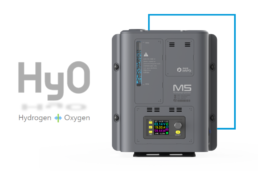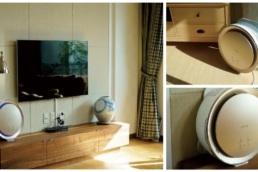Diabetic Foot Ulcers
What are bioprinted skin patches? Before getting into the treatment, we must first explain what diabetic foot ulcers are. Diabetic foot ulcers are sores that occur on the soles of people with diabetes because of a breakdown in the skin tissue. The most common areas for these types of ulcers are on the underside of the toes or the heels. Around 15 percent of diabetic people suffer from this problem. Once these ulcers occur, there is a high risk for amputation (14 to 24%). While the majority of them can heal (60 to 80%), it is very important to get treatment for diabetic foot ulcers right away.
Those that have diabetes can get foot ulcers at some point. Older men are more likely to develop ulcers, as well as those that use insulin. Being overweight and those that use alcohol or smoke will be at an added risk for developing foot ulcers.
Standard Treatments for Diabetic Foot Ulcers
In choosing the right treatment for a diabetic foot ulcer, it is important first to determine the cause. Is it related to nerve tissue? Is it related to blood vessels? Vascular ulcers are more serious. A specialist surgeon will need to do a full examination. They will ultimately decide whether the patient needs surgery and recommend the right treatment plan. Overall, it is important that the patient stays off their feet as much as possible. Being on your feet too often can worsen the ulcer and grow in size. Below are some of the standard treatments for diabetic foot ulcers.
Types of treatments for diabetic foot ulcers:
- Corrective footwear (diabetic shoes, casts, dressings, shoe inserts, or foot braces)
- Removal of dead tissue (done by a doctor)
- Skin grafting Antibiotics (a tissue sample of the ulcer will be sent to a lab to determine which antibiotic to prescribe)
- Daily foot baths (the ulcer needs to be cleaned daily with antiseptic or a superoxide solution) with medical-grade honey in an ointment form
- Moisturize the area to regain skin health
- Avoid walking on your barefoot
Bioprinted Skin Patches for Diabetic Foot Ulcers
After years of investigating ways to manage treatment for diabetic foot ulcers, Korean bioprinter manufacturer ROKIT Healthcare has finally announced the success of a new treatment for diabetic foot ulcers through a customized tissue regeneration platform based on its 4D bioprinting technology. The treatment platform uses ROKIT’s 4D bioprinter Dr. INVIVO, the world’s first sterile, all-in-one 4D bioprinter/organ regenerator.

This new treatment has been globally commercialized after successfully testing diabetic patients in India. Dr. INVIVO is already available in 48 countries. In addition to domestic patents, the company has obtained certifications from the European Medicines Agency (EMA). It is currently undergoing the required procedures from the Food and Drug Administration (FDA) that would allow commercialization in the United States. Furthermore, ROKIT’s autologous (meaning the recipient of the tissue is also the donor) skin regeneration procedure using Dr. INVIVO has already received regulatory approval for non-advanced therapy medicinal products (non-ATMP) by the EMA for the treatment of diabetic ulcers, pressure ulcers, scar revision, and burn wounds, meaning Dr. INVIVO can be used in the operating room.
ROKIT will continue its clinical trials in South Korea, North America, Europe, and East Asia. It is a fast, safe, and cost-effective regenerative therapy solution. In addition, it has been proven to reduce wound size after only a one-time treatment significantly. In addition, it promotes skin regeneration.
Treatments for Diabetic Foot Ulcers – The Process of using Bioprinted Skin Patches
- The process begins with fat tissue taken from the patient (for example, through liposuction).
- This fat tissue sample then prepares an extracellular matrix (ECM) mixture to form a “bioink.” A “bioink” is a mixture of materials and cells.
- The “bioink” is loaded into ROKIT’s Dr. INVIVO 4D bioprinter to produce a dermal patch.
- Lastly, the damaged tissue is removed and replaced with a patch.
Most patients will show a complete closure of the wound in 2 to 5 weeks. Compare this to conventional treatments for diabetic foot ulcers, which can take months to heal and require multiple rounds of treatment or an extended observation period. In addition, the treatment platform includes all of the procedures required to treat diabetic foot ulcers, including 3D scanning of the affected area, diagnosis, bioprinting with personalized “bioink”, and a procedure kit. However, the key to this new form of treatment was ROKIT’s Dr. INVIVO 4D bioprinter, which provides a fast regeneration solution for the customized treatment of diabetic foot ulcers. Therefore, it offers a precise and rapid process to print the patch, and Dr. INVIVO also creates a personalized therapy solution by building patient-specific designs.
Treating diabetic foot ulcers is only the beginning
ROKIT Healthcare’s unique treatment platform is already moving into cartilage regeneration for other tissue damage and disease forms.
“Imagine a 3D bioprinting service in a hospital that can renew your damaged or worn-out body parts. The human body is composed of cells, proteins, and extracellular materials that we can also use as bioink to regenerate organs. Therefore we can regrow the injured body back to its original shape and function. 4D bioprinting technology is the best method to create human organs, such as skin, cartilage, and bone tissue. We are living in the era of the fourth industrial revolution that will ideally change human lifestyles, including our healthcare services. Now, ROKIT Healthcare is a pioneer in advanced cutting edge 4D bioprinting technology,” said Dr. Jeehee Kim, president of ROKIT Healthcare’s DFU and Skin Regeneration Strategy Business Unit.
Sue
Sue is the Co-Founder of Seoulz. She is the mind behind all of Seoulz' creative direction and visuals.
Related Posts





